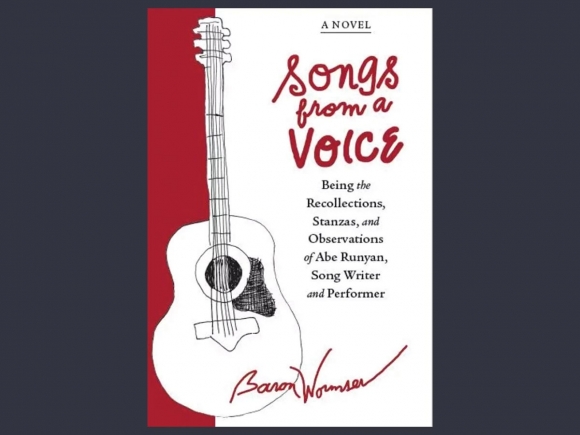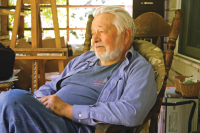Imagining Bob Dylan’s fictional youth

As a reader, I tend to get on jags with authors whom I admire. Recently, I’ve discovered the work of Baron Wormser and have reviewed his nonfiction memoir of living off the grid in New England for 25 years in these pages. An amazing story, an amazing writer. I wanted to read more of his work.
So I’ve been reading his novel this time, Songs From a Voice, that is the story of the imagined life of a young Bob Dylan as told by the main character, Abe Runyan. And what a tale it is; “partly truth and partly fiction” as Dylan himself asserted in one of his classic songs. So well imagined and written is this book that not even halfway through I thought that I was reading a Dylan autobiography — a book that reads like a personal diary revealing sides of someone you’ve always wondered about and wanted to know.
Wormser writes like he is channeling Bob Dylan, who finally reveals to us who he really is. “There’s part of me that never has been close to anyone, including the women I’ve loved. There’s part of me, first and last, that lives in my imagination. You can touch me, but I’m not there. Access isn’t something I can pass out like tickets. There’s something in me that’s beyond me, something that seals me off but replenishes me. Call it the artist, call it the song-maker, call it haunted. The names can only mean so much,” as Abe proclaims.
Songs From a Voice begins with Abe describing the life and landscape of growing up as a Jewish boy in the upper Midwest in Minnesota and lingers there for quite a while to give us a plausible background for what may have formed Dylan as a youth and his love of songs. “There were five of us in the house in which I grew up. No one song could tell you every aspect and angle of what each of us felt day by day and how we acted when we were together.” And then later on he adds this statement: “Poems they had us read in school didn’t feel like part of life. Critics write about influences and what I’ve taken from this song or that song. I’ve taken penty. Loss may be the deepest feeling, and Robert Johnson knew that. In America, losing track of your feelings came easy. Every folk song that had lasted showed a map of true feeling.”
Reminiscent of James Joyce’s Portrait of the Artist As a Young Man, Abe/Dylan emerges and gives us a glimpse of who he is — a walking contradiction. “My songs are about the discrepancies, what tilts one way but says it’s the opposite. Being an artist had to have something to do with letting your imagination do the talking.” But this and any other quotes offered in this short review can’t begin to give one the full breadth and depth of Wormser’s psychological, philosophical and artistic insights.
In the end it’s all about the songs — more important in Abe’s life than the relationships or any social institutions. In the early years it was mentors like Little Richard, Buddy Holly, Chuck Berry and William Blake that spurred him on to begin to write songs and to play the guitar. Later, it would be the black blues artists like Son House and Muddy Waters that spoke to him under the covers of his bed at night listening to a transistor radio to stations in Chicago and New York City.
Related Items
As Abe puts it: “My first tool of liberation was a beige transistor radio. I lay in bed at night and listened to the world beyond my town. That little plastic electronic box opened up my head.” From these roots we venture with Abe/Bob out into the world. “I was where I wanted to be: elsewhere,” he says as his mind and body venture to the east and eventually New York City. Here, he finally finds his creative community and artistic family, his “university of the streets” as it were. “I could never have believed in myself if there hadn’t been those people around me who liked to play the songs and listen to the songs and talk about the songs. For a time there was a community there among the folksingers — or at least a tribe,” Abe says in describing his years and life in NYC’s Greenwich Village.
Anyone 65 years or older and living today is of the same generation as Baron Wormser and grew up with folk music, rock ‘n roll and the blues, which meant that we also grew up listening to the songs of Bob Dylan. Reading Songs From a Voice is like listening to a song-story, a backstory that is the foundation for the hundreds of songs Dylan wrote and that led to his receiving the Nobel Prize for Literature in 2016. As a novel, Songs For a Voice is an homage, investigation, nod and affirmation of the strength of imagination — both Wormser’s and Dylan’s. A must-read for aspiring young musicians, poets and all Bob Dylan fans.
Thomas Crowe is a regular contributer to The Smoky Mountain News and author of Rare Birds: Conversations with Music Legends (Univ. Press of Mississippi, 2008) and the album “The Thief of Words: Thomas Rain Crowe & The Boatrockers,” (Fern Hill Records, 2011).









